Seven Tennesseans received the Medal of Honor for actions during World War II, including our hometown hero and namesake, Charles Coolidge, who faced down two Panzer tanks from a range of just 25 yards and skillfully fought off a battle-hardened German company by rallying a handful of green replacements.
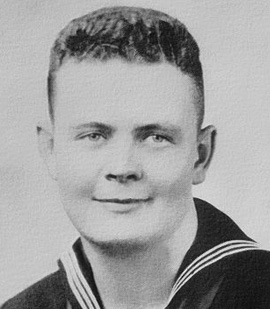
John Harlan Willis
Rank: Pharmacist’s Mate First Class
Organization: U.S. Navy
Company: 3rd Battalion, 27th Marines, 5th Marine Division
Action Place: Iowa Jima, Volcano Islands
(February 28, 1945)
Born: June 10, 1921, Columbia, Tennessee
Citation: For conspicuous gallantry and intrepidity at the risk of his life above and beyond the call of duty as platoon corpsman serving with the 3d Battalion, 27th Marines, 5th Marine Division, during operations against enemy Japanese forces on Iwo Jima, Volcano Islands, 28 February 1945. Constantly imperiled by artillery and mortar fire from strong and mutually supporting pillboxes and caves studding Hill 362 in the enemy cross-island defenses, Willis resolutely administered first aid to the many marines wounded during the furious close-in fighting until he himself was struck by shrapnel and was ordered back to the battle-aid station. Without waiting for official medical release, he quickly returned to his company and, during a savage hand-to-hand enemy counterattack, daringly advanced to the extreme front lines under mortar and sniper fire to aid a marine lying wounded in a shell hole. Completely unmindful of his own danger as the Japanese intensified their attack, Willis calmly continued to administer blood plasma to his patient, promptly returning the first hostile grenade which landed in the shell hole while he was working and hurling back seven more in quick succession before the ninth one exploded in his hand and instantly killed him. By his great personal valor in saving others at the sacrifice of his own life, he inspired his companions, although terrifically outnumbered, to launch a fiercely determined attack and repulse the enemy force. His exceptional fortitude and courage in the performance of duty reflect the highest credit upon Willis and the U.S. Naval Service. He gallantly gave his life for his country.
Aditional Information: Destroyer U.S.S. John Willis bears his name. Part of the University of Memphis Millington Center is named Willis Hall. He is buried at Rose Hill Cemetery, in Columbia, Tennessee. He graduated from Columbia Central High School.

Vernon McGarity
Rank: Technical Sergeant
Organization: U.S. Army
Company: Company L, 393d Infantry, 99th Infantry Division.
Action Place: Near Krinkelt, Belgium
(December 16, 1944)
Born: December 1, 1921, Right, Tennessee
Citation: He was painfully wounded in an artillery barrage that preceded the powerful counteroffensive launched by the Germans near Krinkelt, Belgium, on the morning of 16 December 1944. He made his way to an aid station, received treatment, and then refused to be evacuated, choosing to return to his hard-pressed men instead. The fury of the enemy’s great Western Front offensive swirled about the position held by T/Sgt. McGarity’s small force, but so tenaciously did these men fight on orders to stand firm at all costs that they could not be dislodged despite murderous enemy fire and the breakdown of their communications. During the day the heroic squad leader rescued one of his friends who had been wounded in a forward position, and throughout the night he exhorted his comrades to repulse the enemy’s attempts of infiltration. When morning came and the Germans attacked with tanks and infantry, he braved heavy fire to run to an advantageous position where he immobilized the enemy’s lead tank with a round from a rocket launcher. Fire from his squad drove the attacking infantrymen back, and three supporting tanks withdrew. He rescued, under heavy fire, another wounded American, and then directed devastating fire on a light cannon which had been brought up by the hostile troops to clear resistance from the area. When ammunition began to run low, T/Sgt. McGarity, remembering an old ammunition hole about 100 yards distant in the general direction of the enemy, braved a concentration of hostile fire to replenish his unit’s supply. By circuitous route the enemy managed to emplace a machine gun to the rear and flank of the squad’s position, cutting off the only escape route. Unhesitatingly, the gallant soldier took it upon himself to destroy this menace singlehandedly. He left cover, and while under steady fire from the enemy, killed or wounded all the hostile gunners with deadly accurate rifle fire, and prevented all attempts to re-man the gun. Only when his squad’s last round had been fired was the enemy able to advance and capture the intrepid leader and his men. The extraordinary bravery and extreme devotion to duty of T/Sgt. McGarity supported a remarkable delaying action which provided the time necessary for assembling reserves and forming a line against which the German striking power was shattered.
Aditional Information: They were eventually overrun and held as prisoners of war in Moosburg, Germany until 1945. During the Great Depression, he worked with the Civilian Conservation Corps until joining the Army in 1942. After the war he worked in the Veterans Administration for 35 years. He retired from the military in 1974 with rank of Lieutenant Colonel.
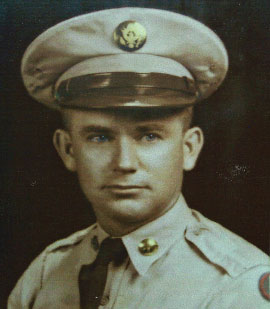
Charles McGaha
Rank: Master Sergeant
Organization: U.S. Army
Company: Company G, 35th Infantry, 25th Infantry Division
Action Place: Near Lupao, Luzon, Philippine Islands
(February 7, 1945)
Born: February 26, 1914, Cosby, Tennessee
Citation: He displayed conspicuous gallantry and intrepidity. His platoon and 1 other from Company G were pinned down in a roadside ditch by heavy fire from 5 Japanese tanks supported by 10 machineguns and a platoon of riflemen. When 1 of his men fell wounded 40 yards away, he unhesitatingly crossed the road under a hail of bullets and moved the man 75 yards to safety. Although he had suffered a deep arm wound, he returned to his post. Finding the platoon leader seriously wounded, he assumed command and rallied his men. Once more he braved the enemy fire to go to the aid of a litter party removing another wounded soldier. A shell exploded in their midst, wounding him in the shoulder and killing 2 of the party. He picked up the remaining man, carried him to cover, and then moved out in front deliberately to draw the enemy fire while the American forces, thus protected, withdrew to safety. When the last man had gained the new position, he rejoined his command and there collapsed from loss of blood and exhaustion. M/Sgt. McGaha set an example of courage and leadership in keeping with the highest traditions of the service.
Aditional Information: McGaha was a Pearl Harbor survivor. He also fought in the Guadalcanal Campaign and the Solomon Islands. He was awarded the Medal of Honor, four Purple Hearts, the Asiatic-Pacific Theater Ribbon with four Bronze Battle Stars, the Philippine Liberation Ribbon with star, American Service Ribbon with star, Combat Infantryman Badge, Good Conduct Medal, and Master Paratrooper Wings and Star.
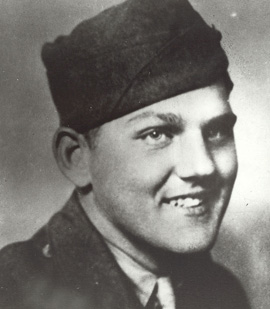
Elbert Luther Kinser
Rank: Sergeant
Organization: U.S. Marine Corps
Company: Company I, 3d Battalion, 1st Marines, 1st Marine Division
Action Place: Okinawa Shima, Japan
(May 4, 1945)
Born: October 21, 1922, Greeneville, Tennessee
Citation: For conspicuous gallantry and intrepidity at the risk of his life above and beyond the call of duty while acting as leader of a Rifle Platoon, serving with Company I, 3d Battalion, 1st Marines, 1st Marine Division, in action against Japanese forces on Okinawa Shima in the Ryukyu Chain, 4 May 1945. Taken under sudden, close attack by hostile troops entrenched on the reverse slope while moving up a strategic ridge along which his platoon was holding newly won positions, Sgt. Kinser engaged the enemy in a fierce hand grenade battle. Quick to act when a Japanese grenade landed in the immediate vicinity, Sgt. Kinser unhesitatingly threw himself on the deadly missile, absorbing the full charge of the shattering explosion in his own body and thereby protecting his men from serious injury and possible death. Stouthearted and indomitable, he had yielded his own chance of survival that his comrades might live to carry on the relentless battle against a fanatic enemy. His courage, cool decision and valiant spirit of self-sacrifice in the face of certain death sustained and enhanced the highest traditions of the U.S. Naval Service. He gallantly gave his life for his country.
Aditional Information: Kinser worked on a family farm until entering the Marines in 1942. There is a historical marker, park, and bridge named after Kinser in Greeneville, Tennessee. A Marine Corps installation on Okinawa Island is named in his honor: Camp Kinser.
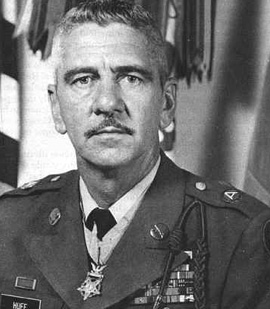
Paul Huff
Rank: Corporal
Organization: U.S. Army
Company: 509th Parachute Infantry Batallion, 101st Airborne Division
Action Place: Near Carano, Italy
(February 8, 1944)
Born: June 23, 1918, Cleveland, Tennessee
Citation: For conspicuous gallantry and intrepidity at risk of life above and beyond the call of duty, in action on 8 February 1944, near Carano, Italy. Cpl. Huff volunteered to lead a six-man patrol with the mission of determining the location and strength of an enemy unit which was delivering fire on the exposed right flank of his company. The terrain over which he had to travel consisted of exposed, rolling ground, affording the enemy excellent visibility. As the patrol advanced, its members were subjected to small-arms and machine-gun fire and a concentration of mortar fire, shells bursting within 5 to 10 yards of them and bullets striking the ground at their feet. Moving ahead of his patrol, Cpl. Huff drew fire from three enemy machine guns and a 20-mm weapon. Realizing the danger confronting his patrol, he advanced alone under deadly fire through a minefield and arrived at a point within 75 yards of the nearest machine-gun position. Under direct fire from the rear machine gun, he crawled the remaining 75 yards to the closest emplacement, killed the crew with his submachine gun, and destroyed the gun. During this act he fired from a kneeling position which drew fire from other positions, enabling him to estimate correctly the strength and location of the enemy. Still under concentrated fire, he returned to his patrol and led his men to safety. As a result of the information he gained, a patrol in strength sent out that afternoon, one group under the leadership of Cpl. Huff, succeeded in routing an enemy company of 125 men, killing 27 Germans, and capturing 21 others, with a loss of only three patrol members. Cpl. Huff’s intrepid leadership and daring combat skill reflect the finest traditions of the American infantryman.
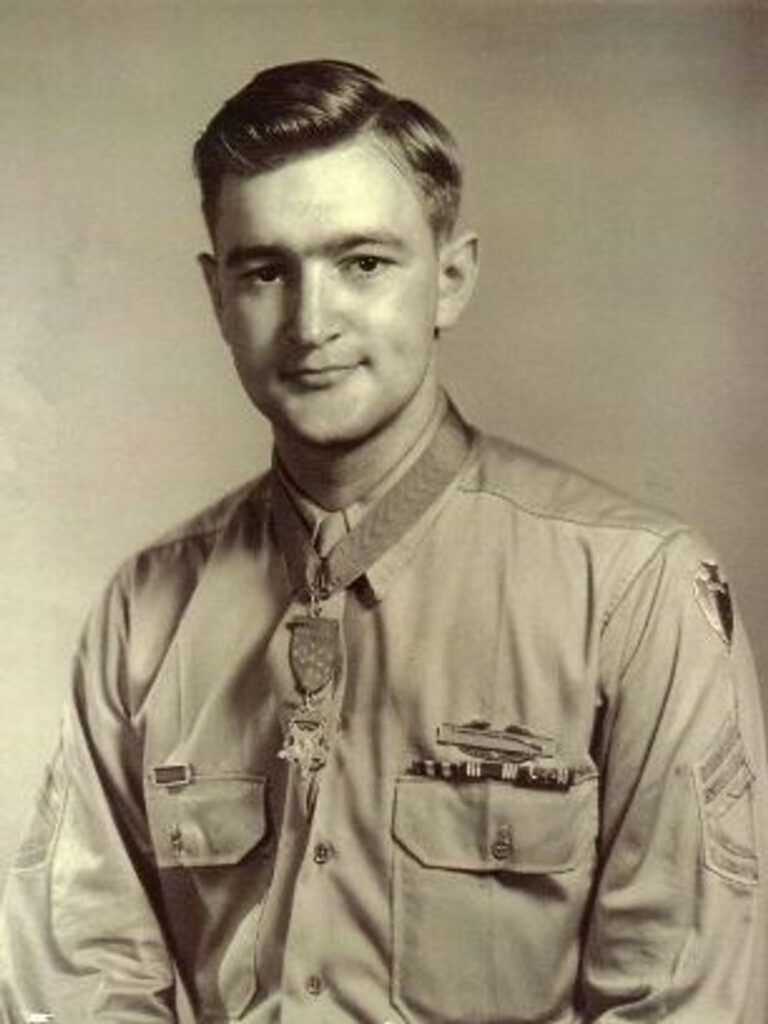
Charles H. Coolidge
Rank: Technical Sergeant
Organization: U.S. Army
Company: Company M, 141st Infantry, 36th Infantry Division
Action Place: East of Belmont sur Buttant, France
(October 24-27, 1944)
Born: August 4, 1921, Signal Mountain, Tennessee
Citation: Leading a section of heavy machine guns supported by one platoon of Company K, he took a position near Hill 623, east of Belmont-sur-Buttant, France, 24 October 1944, with the mission of covering the right flank of the 3d Battalion and supporting its action. TSgt. Coolidge went forward with a sergeant of Company K to reconnoiter positions for coordinating the fires of the light and heavy machine guns. They ran into an enemy force in the woods estimated to be an infantry company. TSgt. Coolidge, attempting to bluff the Germans by a show of assurance and boldness, called upon them to surrender, whereupon the enemy opened fire. With his carbine, TSgt. Coolidge wounded two of them. There being no officer present with the force, TSgt. Coolidge at once assumed command. Many of the men were replacements recently arrived; this was their first experience under fire. TSgt. Coolidge, unmindful of the enemy fire delivered at close range, walked along the position, calming and encouraging his men and directing their fire. The attack was thrown back. Through 24 and 26 October the enemy launched repeated attacks against the position of this combat group but each was repulsed due to TSgt. Coolidge’s able leadership. On 27 October, German infantry, supported by two tanks, made a determined attack on the position. The area was swept by enemy small-arms, machine-gun, and tank fire. TSgt. Coolidge armed himself with a bazooka and advanced within 25 yards of the tanks. His bazooka failed to function and he threw it aside. Securing all the hand grenades he could carry, he crawled forward and inflicted heavy casualties on the advancing enemy. Finally it became apparent that the enemy, in greatly superior force, supported by tanks, would overrun the position. TSgt. Coolidge, displaying great coolness and courage, directed and conducted an orderly withdrawal, being himself the last to leave the position. As a result of TSgt. Coolidge’s heroic and superior leadership, the mission of his combat group was accomplished throughout four days of continuous fighting against numerically superior enemy troops in rain and cold and amid dense woods.
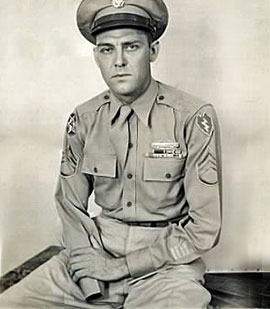
Raymond H. Cooley
Rank: Staff Sergeant
Organization: U.S. Army
Company: Company B, 27th Infantry, 25th Infantry Division
Action Place: Near Lumboy, Luzon, Philippine Islands
(February 24, 1945)
Born: May 7, 1916, Dunlap, Tennessee
Citation: He was a platoon guide in an assault on a camouflaged entrenchment defended by machine guns, rifles, and mortars. When his men were pinned down by two enemy machine guns, he voluntarily advanced under heavy fire to within 20 yards of one of the guns and attacked it with a hand grenade. The enemy, however, threw the grenade back at him before it could explode. Arming a second grenade, he held it for several seconds of the safe period and then hurled it into the enemy position, where it exploded instantaneously, destroying the gun and crew. He then moved toward the remaining gun, throwing grenades into enemy foxholes as he advanced. Inspired by his actions, one squad of his platoon joined him. After he had armed another grenade and was preparing to throw it into the second machine gun position, six enemy soldiers rushed at him. Knowing he could not dispose of the armed grenade without injuring his comrades, because of the intermingling in close combat of the men of his platoon and the enemy in the melee which ensued, he deliberately covered the grenade with his body and was severely wounded as it exploded. By his heroic actions, S/Sgt. Cooley not only silenced a machine gun and so inspired his fellow soldiers that they pressed the attack and destroyed the remaining enemy emplacements, but also, in complete disregard of his own safety, he accepted certain injury and possible loss of life to avoid wounding his comrades.
Aditional Information: Raymond Cooley is one of a few known Medal of Honor recipients to survive after jumping on a grenade. He lost his right arm due to the explosion. His injuries included “torn off right hand, deep wounds on forehead, right eye, nose, both shoulders, right thigh, and abdomen.” Before the Philippines battles, Cooley participated in the battles of Guadalcanal and the New Guinea invasion.

